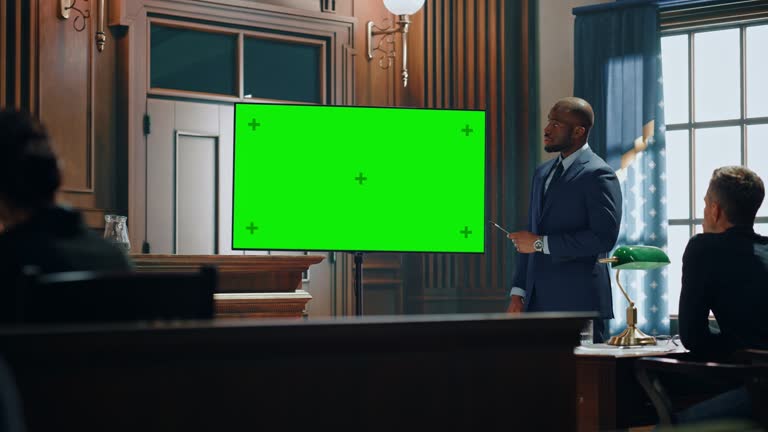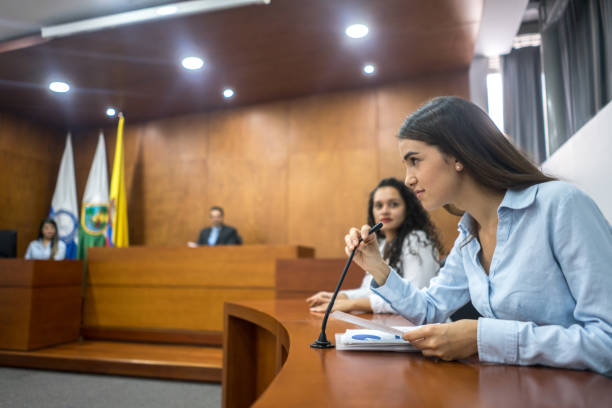Browsing the Complexities of Test Presentations: Tips for Seamless Shipment and Engaging Debates
In the realm of lawful procedures, the art of trial discussion stands as an essential factor of success. As attorneys browse the elaborate internet of court dynamics, the capacity to perfectly supply disagreements and proof while mesmerizing the court's attention comes to be critical. The intricacies fundamental in test presentations call for a delicate equilibrium of technique, ability, and finesse. By refining strategies that make certain a polished distribution and crafting engaging arguments that resonate with the target market, attorneys can considerably boost their campaigning for. In a globe where persuasion rules supreme, mastering the ins and outs of test presentations is not merely a choice yet a need for those seeking to prevail in the court.

Understanding Trial Goals
To properly browse a trial, it is important to have a clear understanding of the purposes that need to be accomplished. Prior to tipping right into the courtroom, legal teams need to specify their objectives and preferred results. These purposes work as assisting principles throughout the test, shaping techniques and influencing decision-making processes.
Comprehending test purposes entails a comprehensive analysis of the instance, lawful criteria, and the customer's best interests. Trial Presentations. It requires a precise evaluation of the truths, determining crucial problems, and expecting prospective difficulties. By establishing measurable and particular goals, attorneys can tailor their debates and discussions to line up with the preferred results
Moreover, a clear grasp of test purposes allows legal teams to focus on proof, witnesses, and legal arguments effectively. It enables the growth of a meaningful narrative that resonates with the discretionary, enhancing the overall instance presentation.

Organizing Proof Properly
Having a clear understanding of test purposes lays the structure for organizing evidence effectively in lawful procedures - Trial Presentations. By lining up the presentation of evidence with the wanted end results of the trial, legal groups can reinforce their disagreements and improve their persuasiveness. One essential aspect of arranging proof is categorization. Organizing proof based on themes or importance to details lawful aspects can help simplify the presentation and make complex details a lot more digestible for the court or jury.
One more crucial element in organizing proof efficiently is developing a rational circulation. Providing proof in a sequential and systematic way can aid develop an engaging narrative that sustains the legal disagreements being made. In addition, utilizing aesthetic aids such as timelines, graphs, or graphes can further boost the organization of evidence and help in clarifying intricate relationships or series of occasions.
Additionally, ensuring that all evidence offered is permissible and appropriate to the case is essential. Unnecessary or inadmissible evidence can interfere with the toughness of the debate and potentially hurt the credibility of today celebration. A thorough testimonial and option procedure should be undertaken to include only the most legally sound and impactful evidence in the trial presentation.
Crafting Convincing Narratives
Crafting engaging stories plays a pivotal role in providing convincing debates throughout lawful process. A well-crafted narrative has the power to captivate the audience, stimulate feelings, and inevitably guide the choice for the here and now party. When constructing a narrative for a trial presentation, it is vital to establish a clear storyline that highlights bottom lines and links them in a meaningful way. Begin by detailing the truths of the situation in an engaging way, making sure that the sequence of events is easy to follow. Introduce personalities properly, offering history info that aids the audience understand their actions and motivations. In addition, including dazzling summaries and engaging language can bring the narrative to life, making it a lot more unforgettable for the discretionary. By weaving with each other evidence, testimony, and lawful debates into a cohesive and persuasive story, lawful experts can efficiently advocate for their customers and enhance the possibility of a favorable end result in the court.
Mastering Aesthetic Aids
Effective usage of aesthetic aids is essential to enhancing the effect and clearness of test discussions. Visual help, when made use of tactically, have the power to streamline complicated info, reinforce bottom lines, and leave a long lasting impact on the judge and jury. To grasp aesthetic help in trial presentations, it is critical to guarantee that they are clear, succinct, her response and pertinent to the arguments being made.
When incorporating aesthetic aids, such as graphes, photographs, timelines, or graphs, into a test discussion, it is vital to keep them visually appealing yet expert. The visuals need to enhance the spoken debates, providing a graph of the information being talked about without overwhelming the audience with unnecessary details.
Furthermore, practicing with the visual aids in advance is imperative to ensure advice a smooth distribution throughout the test. Acquainting oneself with the material, shifts, and timings of each visual aid can help maintain the flow of the discussion and protect against technological problems that might develop.
Supplying Impactful Closing Disagreements
An engaging closing disagreement serves as the end result of a trial discussion, encapsulating the core story and encouraging the judge and court towards a desirable decision. Begin by laying out the primary debates that support your customer's position, stressing why the evidence provided throughout the trial supports your story.
Furthermore, including emotional charm can further enhance your closing debate. By connecting and humanizing the instance on an individual level with the decision-makers, you can stimulate compassion and understanding, influencing their assumption of the facts provided. In addition, reiterating the legal criteria that should be satisfied for a favorable ruling can strengthen the validity of your placement. Eventually, a well-crafted closing disagreement need to leave a lasting perception, engaging the discretionary to rule in your client's favor.
Conclusion
In conclusion, mastering trial presentations includes comprehending goals, arranging proof, crafting stories, making use of aesthetic help, and supplying impactful closing debates. By applying these approaches properly, legal representatives can offer their instance flawlessly and make engaging disagreements in the court. It is critical to browse the intricacies of test presentations with precision and skill to achieve success in lawful process.
By lining up the presentation of evidence with the desired end results of the Continued test, legal teams can strengthen their debates and boost their persuasiveness (Trial Presentations). To grasp visual aids in test discussions, it is important to guarantee that they are clear, concise, and pertinent to the debates being made
A compelling closing argument offers as the conclusion of a trial discussion, enveloping the core narrative and encouraging the court and jury in the direction of a favorable decision. Begin by laying out the major debates that support your client's setting, emphasizing why the proof offered throughout the test supports your story.In conclusion, understanding trial discussions includes understanding purposes, organizing proof, crafting narratives, making use of visual help, and providing impactful closing arguments.